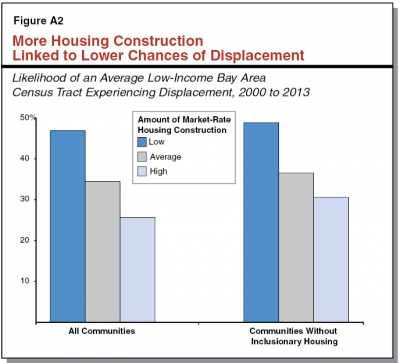
There are a lot of arguments about displacement in the Bay Area and whether the best strategy is to build more housing or to attempt to control what type of housing is built (e.g. affordable housing requirements) and how much people pay for it (e.g., rent control). At the Institute it is important to examine the evidence before making a conclusion, and after doing so we believe that the most effective way not to displace communities is to build places for others.
One compelling piece of recent evidence comes from The Legislative Analyst’s Office (LAO), a nonpartisan government think tank with no dog in the fight. The LAO report — a follow-up to a March 2015 report examining the causes and consequences of California’s high housing prices — takes a focused look at how to help low-income Californians afford housing. The report presents significant evidence that the creation of additional market-rate housing in the state’s urban communities would make housing more affordable for low-income Californians. It also finds that market-rate housing mitigated displacement in many cases. Finally, the report’s examination of inclusionary zoning policies found they had no discernible effect on displacement.
Much of the report isn’t news for those who have followed housing prices in the region and the state. A 1988 report by a division of the Bay Area Council, that would eventually become the Economic Institute, recommended strategies that could increase housing supply and therefore lower prices. The LAO report certainly won’t end the debate, but it is yet another strong piece of evidence.